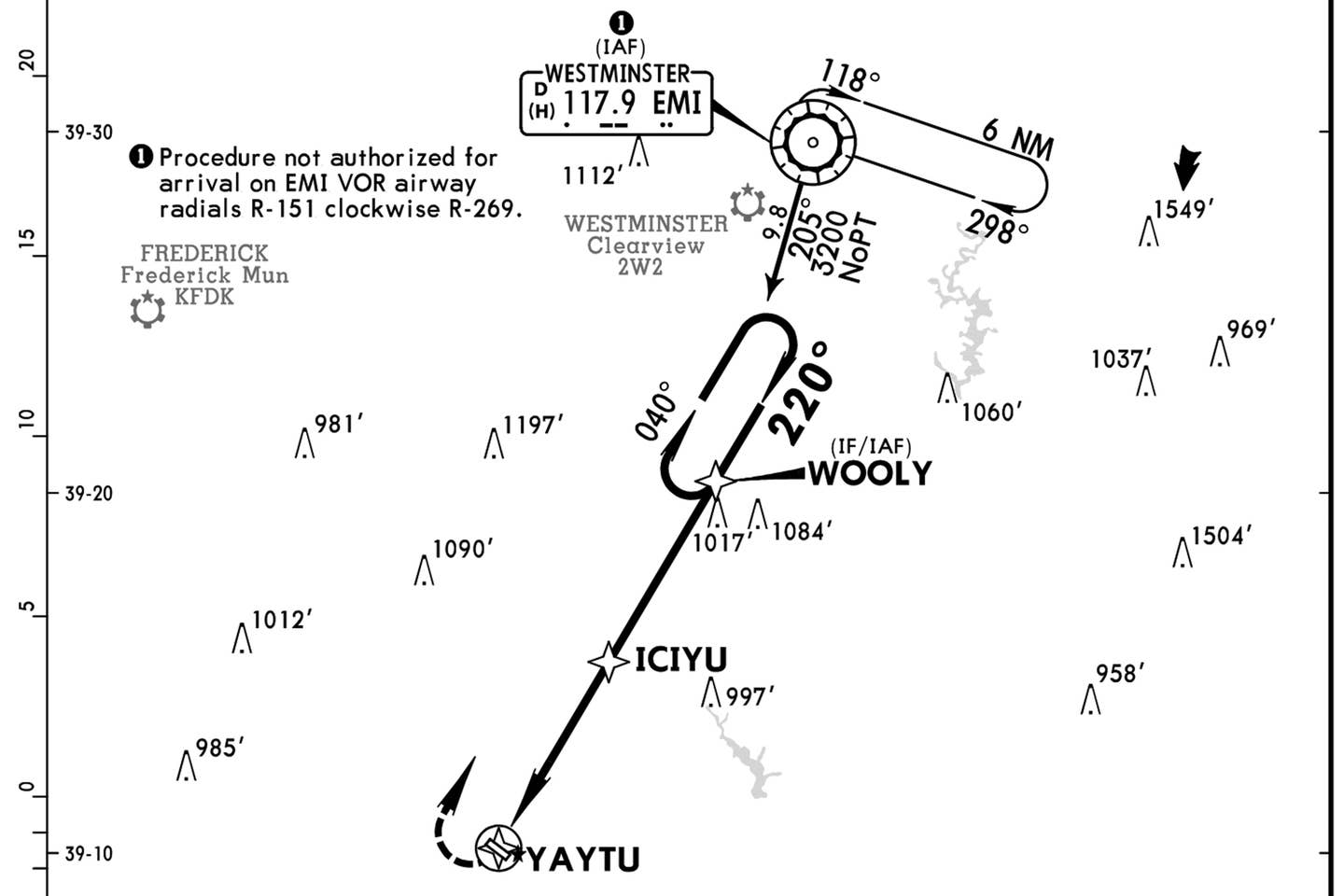
The RNAV (GPS) – A approach into Gaithersburg, Maryland. Jeppesen
Gaithersburg is the choice for many pilots who don’t want to fly into Washington Dulles International Airport (IAD) or aren’t able to fly into Washington’s Reagan National Airport (DCA). The Montgomery County Airpark (GAI) sits roughly 25 miles north of the nation’s capital, making for a short drive to downtown Washington. The airpark’s single 4,202-foot Runway 14/32 offers the best of two worlds for GA pilots because, while the airport is subject to the Special Flight Rules Area around the capital, GAI sits just north of the Washington, D.C., Flight Restricted Zone that brings with it special operating restrictions for GA aircraft, such as a TSA authorization that includes submitting the pilot in command’s fingerprints. However, because GAI sits within a 30-nautical-mile radius of the DCA VOR/DME, all pilots must have completed the FAA’s ALC-405 special-awareness training for SFRA operations. The busy airspace around GAI is controlled by Potomac Approach for Washington’s Dulles and Reagan National airports and sits not far from Baltimore’s Class B.
A. Inbound Fix
Pilots can expect an arrival procedure using the Westminster (EMI) VOR to set up aircraft for the RNAV (GPS)-A at Gaithersburg. Savvy pilots arriving from the north will expect this ahead of time and add EMI in the flight plan, knowing it will be used for sequencing. An approach note on the plan view confirms: “Procedure not authorized for arrival on EMI VOR airway radials R-151 clockwise R-269.”
B. The Landing Runway
Because this circling- only approach establishes arriving aircraft on a 220-degree final approach course, pilots should be prepared for a steep left or right turn once the airport or approach environment is in sight in order to line up for Runway 14 or 32. All traffic patterns at GAI keep aircraft to the east of the airport at all times.
C. Circling Minimums
Note the procedure features two sets of landing minimums depending upon which altimeter setting the pilot uses. With a local setting generated through the GAI AWOS on 128.275, the landing minimums are nearly 100 feet lower than if the pilot obtains the altimeter setting from IAD 19 nm to the southwest. Pilots are cautioned to be sure they understand which altimeter setting Potomac Approach is offering. If the approach controller doesn’t say, “Gaithersburg altimeter setting…” or pilots obtain the setting on their own from the Gaithersburg AWOS, they should use the higher circling minimum.
D. Turn at WOOLY
Pilots inbound from EMI should expect a course change from 205 to 220 at WOOLY, as well as a step-down to 2,500 feet from the 3,200-foot minimum altitude from EMI to WOOLY en route to the FAF at ICIYU. Note that ATC could offer pilots a lower altitude than 3,200 feet if the local approach controller’s minimum vectoring altitude allows. This might be used to keep GAI traffic well clear of larger aircraft in the area.
E. Missed Approach
When used, the missed approach takes aircraft via GPS direct back to EMI for a hold at 3,000 feet unless otherwise instructed by ATC. It’s important to note that while most IFR pilots expect one-minute inbound legs once established in the hold, here on the GPS-based racetrack pattern from GAI, those legs are 6 nm long instead. This is longer than most holding patterns, but it will require the pilot to make less frequent turns. Most modern autopilots are fully capable of flying these kinds of holds.
This story originally published in the December 2019 issue of Flying Magazine

Sign-up for newsletters & special offers!
Get the latest FLYING stories & special offers delivered directly to your inbox






